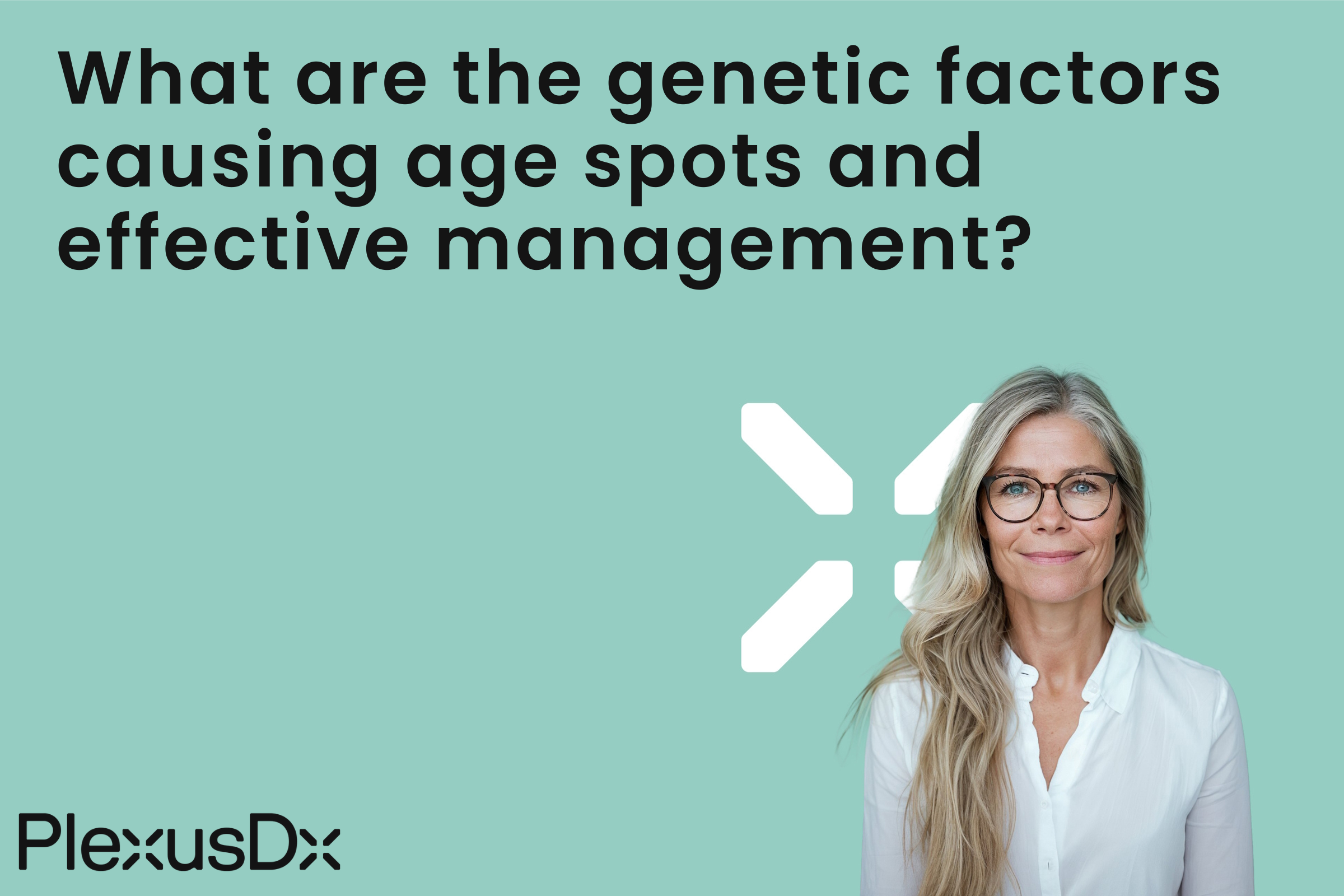As people grow older they frequently develop age spots which are also referred to as solar lentigines sun spots or liver spots as a common skin issue.
These harmless dark spots result from increased melanin production yet serve as indicators of skin aging. Age spots usually manifest on areas such as the face, neck, hands, and forearms because of long-term UV radiation exposure. This blog post investigates age spots from a genetic perspective while examining their relationship with sun exposure and genetic factors and offering actionable advice for their management and prevention.
Genetic Trait:
The formation of age spots on skin owes its existence to melanin production which provides skin color. Age spots themselves do not pose a risk to health yet they show the effects of photoaging which speeds up because of UV radiation exposure. Age spots appear in various sizes between a few millimeters and over a centimeter and occur more frequently in people who are older than 50 years. Genetic factors contribute to age spot formation because specific genes affect the production of melanin pigment. People who experience sunburns or have spent too much time in the sun face greater chances of developing age spots. Regular sunscreen application protects skin from UV damage yet permits beneficial sunlight exposure for health and well-being. Age spots become more common as people grow older and this effect is especially pronounced in those who are over 50 years old. The risk of developing age spots increases for women who have diabetes. Age spots mainly represent a cosmetic issue but they still remind us how vital it is to maintain sun protection measures and consistent skin care throughout our lives.
To effectively manage and prevent age spots follow these recommended tips:
- Apply sunscreen every day to shield your skin from UV rays even when it is cloudy outside.
- When you spend time outside make sure to wear protective clothing including hats and long sleeves.
- Keep your skin healthy by drinking plenty of water and consuming foods that contain antioxidants.
- Apply topical treatments such as retinoids or vitamin C serums to diminish the visibility of age spots.
- Seek professional advice from a dermatologist who can provide customized skin treatment solutions according to your specific skin type and issues.
Age spots represent a widespread skin condition whose development depends on genetic factors as well as sun exposure and aging. Although age spots do not cause harm to the body they prompt people to pay attention to sun protection and proper skin care routines. You can successfully manage and prevent age spots through sun-safe habits and a healthy lifestyle while consulting professionals as required. Explore Precision Health & Wellness tests from PlexusDx available at PlexusDx.com, Amazon and Walmart to protect your skin and enhance your general health. Your skin demonstrates your total health condition which makes skin care fundamental for maintaining good health. Adopt healthy lifestyle practices to shield your skin from UV radiation and seek expert advice to achieve optimal skin health.

Share:
What health outcomes linked to rs1805087 A2756G allele in MTR gene?
Effects of IL-23R gene variations on immune health and autoimmune disorders?